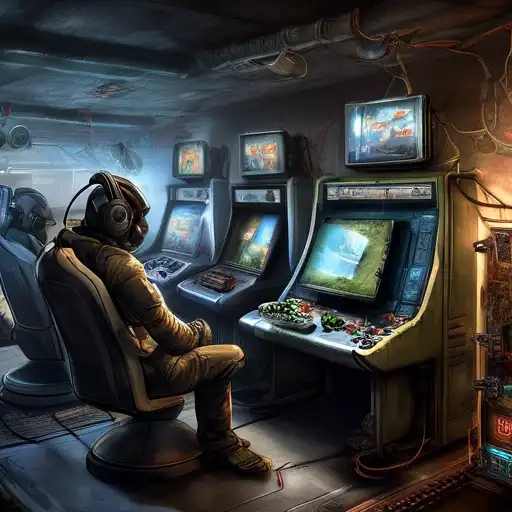The Dawn of Gaming: From Pixels to Virtual Realities
The evolution of gaming technology is a fascinating journey that mirrors the rapid advancement of digital technology. From the simple, pixelated games of the 1970s to the immersive virtual realities of today, gaming has undergone a transformation that has not only changed how we play but also how we interact with technology.
The Early Years: Arcade and Console Gaming
The first video games were simple, two-dimensional affairs that captivated audiences in arcades. Titles like Pong and Space Invaders laid the groundwork for what would become a multi-billion dollar industry. The introduction of home consoles by companies like Atari and Nintendo brought gaming into the living room, making it a staple of home entertainment.
The Rise of Personal Computing and Online Gaming
With the advent of personal computers, gaming took another leap forward. Games became more complex, with richer graphics and deeper storylines. The internet opened up new possibilities, allowing players to connect with others around the world. Massively multiplayer online games (MMOs) like World of Warcraft created vast digital worlds for players to explore together.
The Modern Era: Mobile and Virtual Reality
Today, gaming technology continues to evolve at a breakneck pace. Mobile gaming has made games more accessible than ever, with millions of people playing on their smartphones every day. Meanwhile, virtual reality (VR) and augmented reality (AR) are pushing the boundaries of immersion, offering players experiences that were once the stuff of science fiction.
Looking Ahead: The Future of Gaming Technology
As we look to the future, it's clear that gaming technology will continue to evolve. Advances in artificial intelligence, cloud gaming, and haptic feedback promise to make games even more immersive and interactive. The line between the virtual and the real is becoming increasingly blurred, opening up new possibilities for storytelling, social interaction, and entertainment.
The evolution of gaming technology is not just about better graphics or more powerful consoles. It's about how these advancements change the way we play, connect, and experience stories. As technology continues to advance, the potential for gaming is limitless.
Key Milestones in Gaming Technology
- The release of Pong in 1972, marking the beginning of the video game industry.
- The introduction of the Nintendo Entertainment System (NES) in 1985, revitalizing the home console market.
- The launch of World of Warcraft in 2004, popularizing the MMO genre.
- The rise of mobile gaming in the 2010s, making games accessible to a global audience.
- The development of VR and AR technologies, offering new ways to experience games.
For more insights into the latest in gaming technology, check out our technology section.
